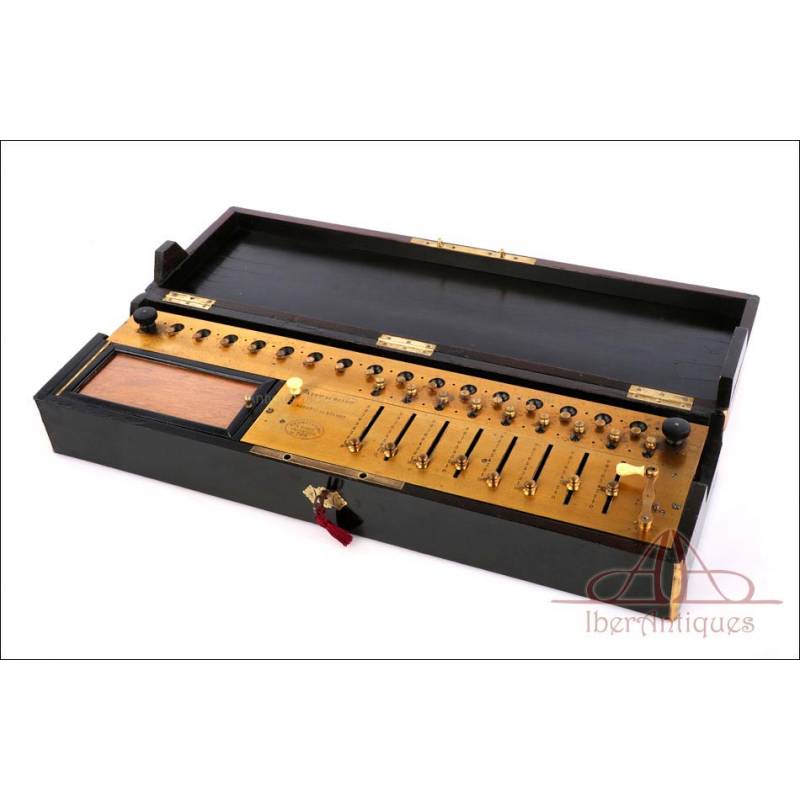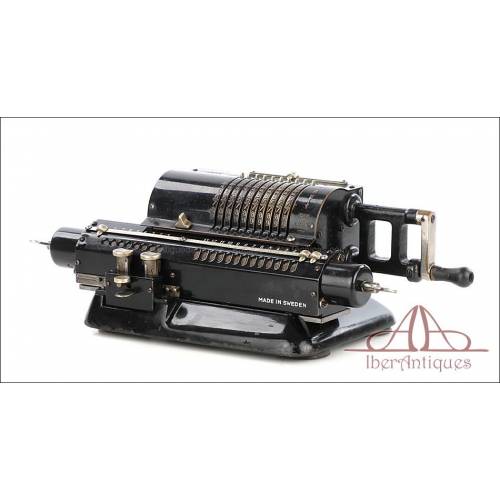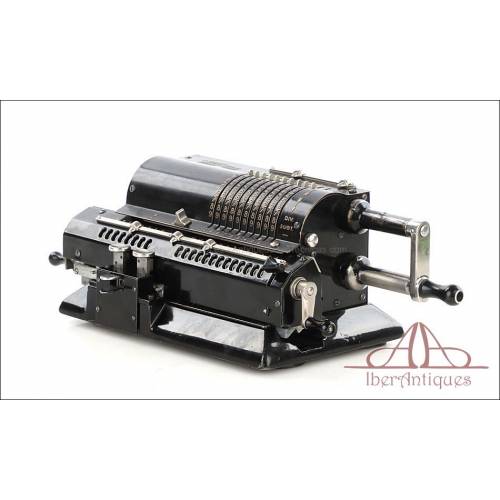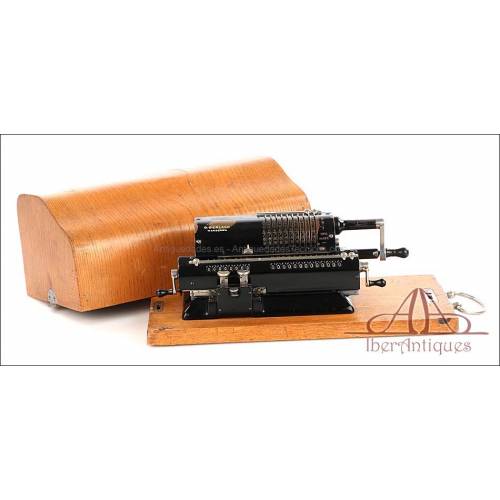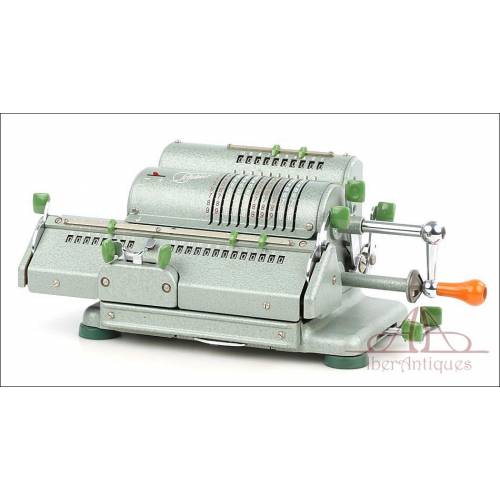E-296
Antique Thomas de Colmar Arithmometer, N/S: 709, Paris, France, ca. 1870
Antique Thomas de Colmar Arithmometer N/S: 709, c. 1870. Working. Rare model with ebonized Napoléon III case. Museum-quality piece.
Sold!
Antique Thomas de Colmar Arithmometer, SN 709, Paris, France, circa 1870
Outstanding and extremely rare example of the Thomas de Colmar Arithmometer, serial number 709, manufactured in Paris, France around 1870. This extraordinary piece marks a major milestone in the history of technology: the first mechanical calculator to be successfully produced and sold commercially, originally invented in 1820 by Charles Xavier Thomas de Colmar and later manufactured more widely from the mid-19th century onward. This restored unit retains all of its original functional and aesthetic integrity, making it a true gem for technical and industrial collectors.
Its elegant, solid ebonized wood case with Napoléon III-style marquetry inlays is extremely rare and significantly enhances its value. Inside, the characteristic gilded brass plate is perfectly preserved, showcasing the sliders, input levers, and numerical dials. It bears the engraved inscription THOMAS de Colmar, A PARIS, INVENTEUR Nº 709, confirming its authenticity.
The left-hand side compartment with a hinged lid is also designed to hold a slip of paper between the glass and the lid, ideal for note-taking during calculations. Although the glass is antique, it is not original, the original would have been acid-etched translucent glass. The unit also includes five original bone result markers, three of which have broken tips, very common for pieces of this age. The tips can be easily restored.
As for its working condition, this is a complete and functional example. The machine performs basic mathematical operations effectively, considering its age. However, it should be noted that one of the revolution windows has a weak or faulty retaining spring. Column three does not always produce the correct result, likely due to wear in one of the gears. These anomalies are repairable, but require partial disassembly of the mechanism to access them. The subtraction function also works, although it tends to jam slightly, a common symptom of gear wear after a century and a half of life, which can be corrected with proper cleaning and lubrication. I have not detected any other defects. Overall, it is in very good condition for its age.
The calculation drums appear to be in good overall condition, with no signs of corrosion or damage. The original lock is still functional, though it is not recommended to use it frequently due to age. The original key is included, a very valuable detail for collectors.
It is extremely rare to find a unit of this caliber on the market. Its elegant aesthetics, historical significance, and mechanical functionality make it an exceptional piece for museums, private collectors, or enthusiasts of early computing history. It also stands out as a premium investment piece.
You can watch the video accompanying this listing to see the calculator’s exact working condition.
This masterpiece is more than a relic, it is a living testament to industrial ingenuity and would look stunning in any tech collection or cabinet of curiosities. A unique opportunity for anyone seeking to own a piece of human progress.
Dimensions: 58 x 17.5 x 10 cm (22.8 x 6.9 x 3.9 in)
History of the Thomas de Colmar Arithmometer
The Thomas Arithmometer is a foundational invention in the history of computation. Though first conceived in 1820, it wasn’t until the 1850s and 1860s that its manufacturing and commercialization flourished. Charles Xavier Thomas de Colmar, a visionary entrepreneur and French civil servant, designed the device to assist with complex financial and administrative calculations. It became the first mechanical calculator to achieve commercial success in Europe, laying the groundwork for all mechanical calculators that followed.
Unlike many other inventions of the time, the arithmometer was not a lab curiosity, it was a practical, durable, and accurate tool. Its ability to perform addition, subtraction, multiplication, and division through sliding inputs, gears, and a stepped-drum mechanism (based on Leibniz's principle) made it invaluable. Thomas improved the mechanism for better reliability and ease of use.
Production took place in specialized Parisian workshops, where each unit was handcrafted. Low serial number examples, like this No. 709, were manufactured during the period when Thomas himself oversaw the production, making them far more collectible and historically valuable.
The arithmometer gained acclaim at the 1851 Great Exhibition in London and again in Paris in 1855, where it was celebrated as one of the most advanced inventions of its time. Its success ushered in the era of mechanical calculation in business environments. After Thomas’s death in 1870, the business was continued by his heirs, though later models never quite matched the original in innovation and prestige.
Today, surviving units are preserved in renowned institutions such as the Musée des Arts et Métiers (Paris), Deutsches Museum (Munich), Science Museum (London), and the Smithsonian Institution (Washington D.C.), where they are displayed as milestones in computational history.
The Thomas Arithmometer didn’t just transform 19th-century work, it helped pave the way for automatic calculating machines and, ultimately, the computers of the 20th century. Owning one is not just acquiring a machine, but claiming a cornerstone of technological advancement.

